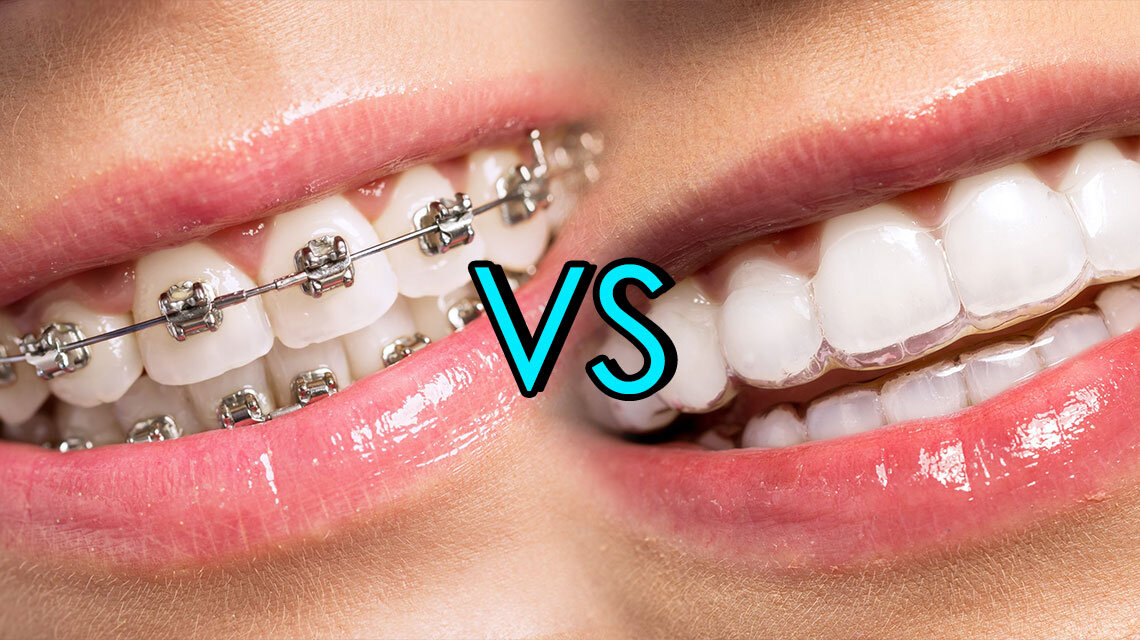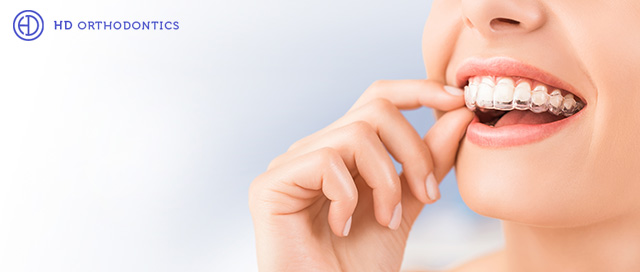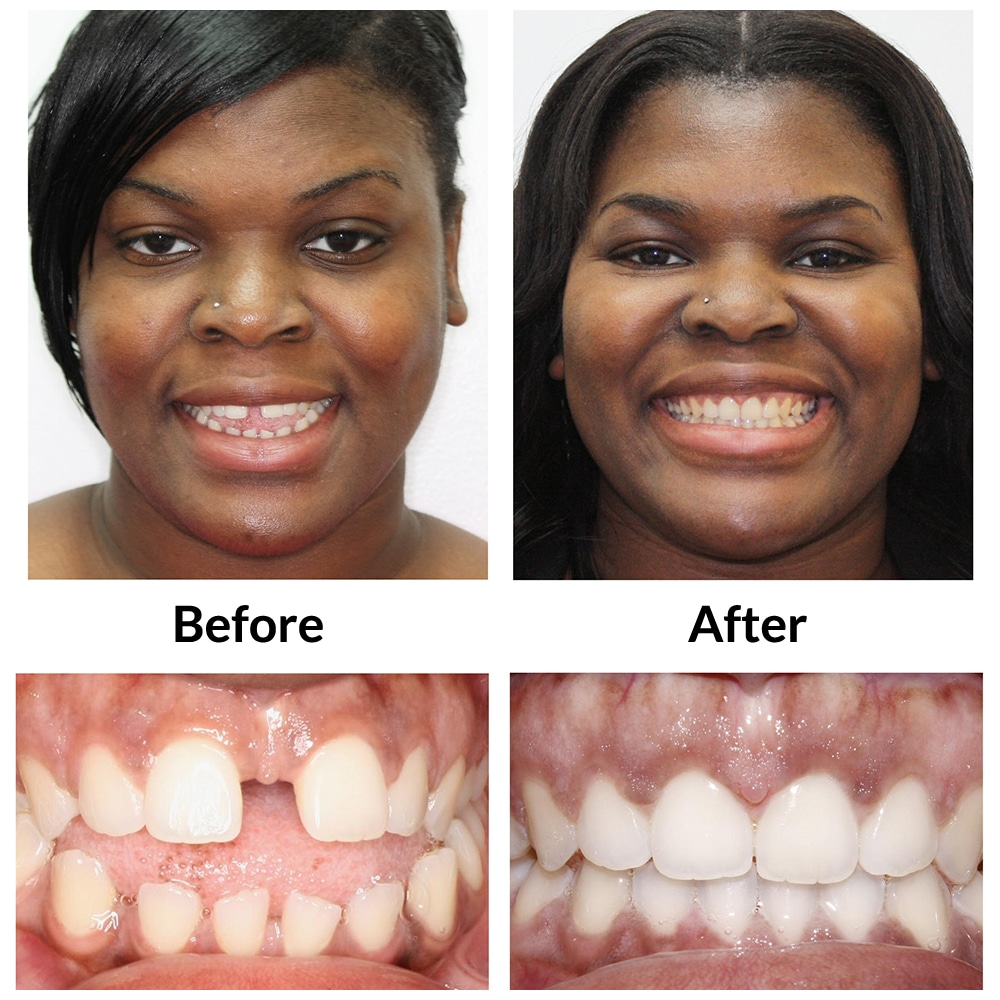Invisalign vs. Conventional Dental braces: Which Alternative Is Right for You?
When considering orthodontic treatment, the selection in between Invisalign and standard braces offers numerous important elements that warrant careful analysis. Invisalign offers a discreet option with detachable aligners, while traditional braces offer a much more visible yet efficient option for extreme imbalance. Each alternative incorporates distinctive advantages and downsides connected to aesthetic appeals, convenience, therapy duration, and expense. Comprehending these nuances is important for making a notified decision that lines up with your personal preferences and lifestyle. The inquiry continues to be: which alternative will ideal fulfill your orthodontic requirements and assumptions?
Summary of Therapy Alternatives

In contrast, standard dental braces include steel braces and wires that are bound to the teeth. This approach applies constant stress over time to accomplish placement. While reliable for complex orthodontic problems, typical braces need routine visits for modifications and can posture obstacles in maintaining oral hygiene as a result of the difficulty of cleaning around cords and braces.
Both options have their advantages, and the option usually depends upon particular dental conditions, way of life choices, and individual conformity. Inevitably, speaking with an orthodontic expert is important for establishing one of the most ideal therapy plan tailored to individual needs. Understanding the nuances of each option can substantially influence the general success of orthodontic treatment.
Aesthetic Considerations
A considerable aspect influencing the choice between Invisalign and traditional braces is the visual allure each therapy uses. Invisalign aligners are crafted from clear plastic, making them basically unseen when put on. This very discreet appearance is particularly appealing to teens and grownups who may feel self-conscious concerning their orthodontic therapy. The capability to keep an all-natural smile throughout the positioning procedure can considerably enhance the patient's self-confidence in social and expert setups.
In contrast, typical dental braces consist of steel brackets and cables, which can be more recognizable. While developments in orthodontic technology have actually led to the advancement of smaller brackets and tinted elastics, conventional dental braces still preserve an even more conspicuous account. For some people, the exposure of dental braces may prevent them from seeking needed therapy.
Eventually, the selection between Invisalign and standard dental braces may rest on individual preferences relating to aesthetic appeals. Patients who focus on discernment frequently lean towards Invisalign, while those that are less concerned concerning presence may select typical braces. Comprehending the visual implications of each option is vital for making an educated decision that lines up with one's way of living and choices.
Comfort and Convenience

In terms of ease, Invisalign aligners are removable, making it possible for people to appreciate their favorite foods without constraint and preserve ideal oral hygiene. Brushing and flossing are simplified, as the aligners can be taken out during these regimens, whereas conventional dental braces call for mindful navigating around cables and brackets.
In contrast, standard dental braces require normal adjustments, making them less hassle-free for those with busy timetables. Overall, the comfort and comfort of Invisalign make it an appealing option for several individuals seeking orthodontic therapy.
Therapy Duration and Efficiency
While both Invisalign and traditional braces work in dealing with dental misalignments, the duration of therapy can differ considerably in between both options. Usually, Invisalign therapy can take anywhere from 12 to 18 months, relying on the complexity of the case. The clear aligners work by slowly moving teeth right into their wanted positions, and regular follow-ups with an orthodontist help guarantee development continues to be on course.
On the other hand, traditional braces typically need a longer dedication, typically varying from 18 months to three years. This is due to their fixed nature and using cords and brackets, which can be much more effective for extreme misalignments and complicated situations (Invisalign). The treatment efficiency of standard braces is well-documented, as they enable accurate modifications and greater control over tooth movement
Ultimately, the selection in between Invisalign and typical dental braces may hinge on both the anticipated therapy period and the certain dental issues handy. Consulting with an orthodontist is important, as they can offer tailored recommendations based upon private requirements, guaranteeing the chosen approach straightens with preferred outcomes and durations.
Cost Contrast and Insurance Coverage Options
Price plays a substantial function in the decision-making procedure for people considering orthodontic therapy, whether selecting Invisalign or traditional dental i was reading this braces. Usually, the cost of Invisalign arrays from $3,000 to $8,000, while conventional dental braces normally cost in between $2,000 and $6,000. Elements affecting these expenses consist of the complexity of the instance, the duration of therapy, and geographical place.
Lots of oral insurance plans supply partial coverage for orthodontic treatments, however the specifics can differ extensively. Generally, conventional dental braces might be more regularly covered by insurance plans compared to Invisalign, which some insurance providers classify as a cosmetic procedure.
Furthermore, a number of orthodontic methods supply adaptable repayment plans, making both treatment alternatives much more available. Patients must inquire about potential financing options and price cuts for in advance settlements. Evaluating the complete expense, consisting of insurance advantages and settlement plans, is important for making a notified decision that straightens with both visual choices and budget considerations.

Final Thought
In summary, the option between Invisalign and conventional braces hinges on multiple factors, consisting of visual choices, comfort, treatment period, and price. Invisalign supplies a very discreet, removable option that facilitates oral health and nutritional versatility, while conventional braces might be a lot more appropriate for complex dental concerns and usually come with a lower price factor. Eventually, examination with an orthodontist is vital to assess specific scenarios and identify the most ideal treatment option for attaining ideal oral positioning.
When considering orthodontic therapy, the option in between Invisalign and browse this site standard braces offers a number of vital aspects that merit cautious evaluation.Contrasting Invisalign and conventional dental braces reveals distinctive treatment alternatives for orthodontic adjustment.While both Invisalign and typical braces are reliable in fixing oral misalignments, the duration of therapy can vary dramatically between the 2 options.Expense plays a significant function in the decision-making procedure for individuals thinking about orthodontic therapy, whether opting for Invisalign or standard dental braces.In summary, the selection between Invisalign and standard braces hinges on several aspects, including visual choices, comfort, treatment period, and price.